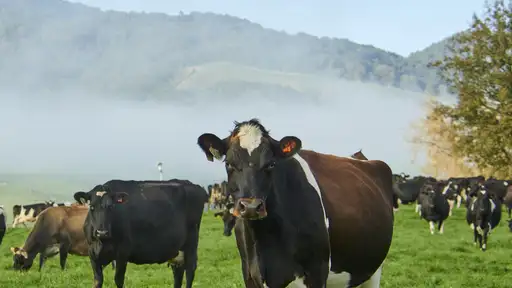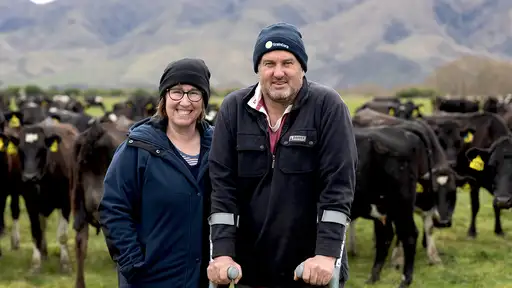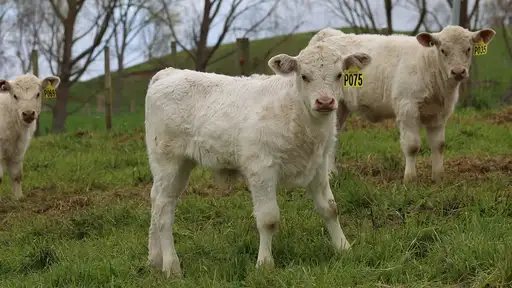David wants to get an exact date of his first SPS rebate. He turns to a table at the side of his dining room, accesses a faded manila folder, and flicks through several neatly typewritten sheets of A4 paper.
The Profit & Loss (P&L) accounts of the farm business from the early-80’s are scrolled through; in particular, David’s looking for the rebate line that’ll recompense costs like his four herd tests of that year.
“In 1980 we were milking about 70-80 cows in a walk-through,” David reminisces as he casts his eyes over the accounts.
The economic conditions of the time were dark and getting darker.
“Our income from milk that year was about $18,000, and the year before it was $17,000. We also made $5,000 from potatoes we were dabbling-in at the time. A year later there was a natural flooding disaster in Rangitikei, and we made $50,000 in potatoes.”
“It was then we decided we’d be good for another year.
“We leased our farm, bought the neighbour’s farm, and went from farming 100 acres to having 270 acres. We built a new cow shed, a 20-bail rotary, and suddenly we went from taking $20,000 for milking cows to $100,000 for milking cows. The business was going mad in those years.
“Then we believed potatoes were just too risky and we were cash poor. In those days SPS straws were at minimal cost, so that’s why we went into Sire Proving.”
All on-the-record
While David’s recollections above provide fascinating context and history, the point of the above can’t be lost: The ability to record, source, and interpret organised records – to reference exact dates, and to carefully cast an eye over data, line-by-line, to confirm what is what – those are the habits of typically successful Sire Proving Scheme farmers.
They know their herd records. They also know traits-other-than production scores, and health information, and calving events. Most of all, they know their cows.
Today the Kowaleski farm spans 240 effective hectares, 60ha of which are hilly, and 550 Holstein-Friesians will be wintered this year – down from a peak of 640 cows about 10 years ago.
However, production levels from a decade ago have largely been maintained, with the 50-bail rotary today seeing an average annual output of 225,000kg milksolids over recent years.
Despite straws being allocated to the herd by SPS (rather than having the choice to nominate bulls, for example), herd improvement clearly remains achievable for the Kowaleskis.
The numbers, the approach
When it comes to genomic breeding worth (gBW) and production worth (PW), the Kowaleski herd is in the top 20% nationally, at 293gBW and 319PW respectively.
During the past decade the herd has averaged gains of 25gBW per year, but more impressive are the gains of the last five years, which average 38gBW (similarly, PW gains over the past decade averaged 27, but during the past five years this figure has jumped to 35PW per year).
David estimates the herd’s top 40% of cows are doing the same milksolid production as the herd’s bottom 60% of cows.
Meanwhile, Paul says he makes his picks based on the highest gBW calves: “We have freedom in terms of picking the ones we keep, but generally we’ll keep them all – if we don’t, we’ll check (with SPS) before we sell any.
“The heifers are getting so good now, the new generations are just getting better and better, healthier and healthier; we get to test and monitor for disease and that means a proactive approach to health. We cull on PW.”
The numbers back Paul up. The farm keeps nearly one-third of its replacements from the top quartile of the herd (based on gBW) and minimises calf selections from the bottom quartile.
“The main advantage of being an SPS farmer is that, genetically, you can be five years ahead of the market,” Paul says.
“The DNA (genomic) technology has come a long way, and it’s always quite pleasing to see the DNA (parentage) results to see how accurate your matching in the paddocks has been.”
20th century vs. 21st century cows
David feels the influence of “big Dutch genetics” have gradually disappeared from Holstein-Friesian cows he’s farmed over the years.
“Nowadays they’re mid-sized, and more efficient in terms of liveweight to production. Conformation in our herd has got increasingly better over the years.
“The biggest change though is that you don’t help calve cows anymore. Years ago, when there were 600-odd cows, you’d have to go out every night and you’d probably have to (assist) calve 60 or 70. Now you’d be lucky to assist only three.”
Paul agrees, the increasing influence of new technologies such as SGL and wearables is allowing farmers to do more with less.
“We use MINDA® records, and our phone is great for looking up data. We’ve just got Halter collars so we’ll be able to see if there’s a cow in distress at calving time, or if there’s any health concerns.
“With wearables we can do all-AB. As more farmers use this kind of technology people will be able to age their pregnancies based on milk pregnancy tests and AB dates, so it’s less intrusive and disruptive to the cows.”
Are the Kowaleskis open to change?
“Sometimes I wonder if we should mate just to the top 40% of our herd, and put the rest to something else,” David says.
More change is perhaps on the horizon.





